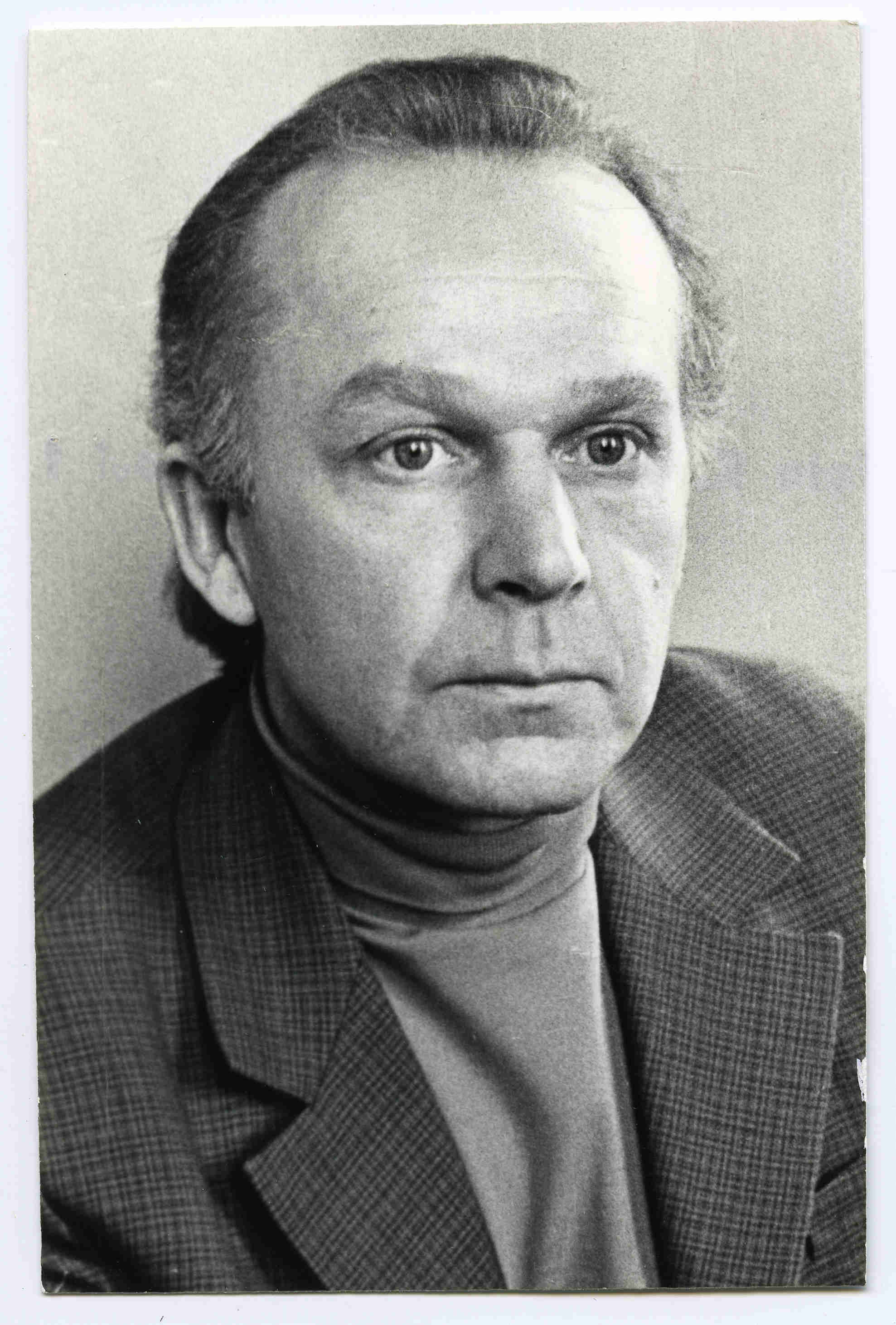
Aleksander Suuman
Aleksander Suuman (given name Suumann, also known as Suumani Sass; 25. IV 1927 – 19. IV 2003) was a poet and painter, one of the most recognised representatives of the generation of poets of the sixties.
He was born at Metsaküla in Avanduse parish, Virumaa county, and was educated at Simuna and Väike-Maarja; he studied painting at the Tartu Institute of Art. He worked as a teacher in Rakvere, at the Tartu Art School and at the State Art Institute in Tallinn. He joined the Writers’ Union in 1967. He was awarded the Order of the White Star, Class V (2001), won the J. Smuul prize in 1981 for the poetry collection Meil siin Hüperboreas (‘Here in Hyperborea’, 1980) and the Cultural Endowment Annual Award for the collection Tondihobu tõugud vetikatega (‘Emperor Dragonfly Larvae with Algae’, 2002). He died in Tallinn, and is buried in the Metsakalmistu (Forest Cemetery), Tallinn. His sons are the actor, stage director and playwright Toomas Suuman (born 1956) and the artists Aapo Pukk (born 1962) and Imat Suumann (born 1964).
He made his debut with poetry in the newspaper Edasi in 1962; his first collection Oh seda inimest (‘Behold the Man’, 1963) appeared on the cassette Noored autorid II (‘Young authors II’) together with collections by Helgi Muller and Rudolf Rimmel. What is primarily striking about his early poetry is the metaphorical, often visualising experience. The poet’s style plays significantly with his background as an artist. He plays with typographical layout in his text, for example the poem Gooti aken (‘Gothic Window’), which is shaped like a Gothic window (first printed in Looming in 1966). From the beginning he was a strikingly developed and original writer, the themes of whose poetry (a central place being occupied by relations between humans and nature, and the problems of art) have not undergone such great changes as his verse technique and composition have. He was noteworthy as an experimenter, moving from initial free verse through various experiments in form, to modernism.
A shift in his creative path may be observed in the collection Valguse kuma sees (‘Inside the Glow of Light’, 1972), which is dominated by narrative poems. The tone is set by ballads with an ethnographic-folkloristic background, and by extended verse narratives. Mythology and everyday reality are interwoven, and there is a place for humour in it. Among other sources, the material originates from his home territory of Simuna; he has written poetry in the Simuna dialect. The topic of folk poetry has a special place in his earlier collection Krähmukirjad (‘Stained Letters’, 1966), which uses stylistic elements of folk-songs. His experiences from living at Vilsandi are reflected in the collection Meil siin Hüperboreas, which marks a move back to a more lyrical kind of poetry.
In his later poetry, starting with the collection Nofretetega metsas (‘In the Woods with Nefertiti’, 1986), there is a noticeable minimalism in the poems, and both folklore themes and contemporary events are present in the material. Anecdotes play an important part. Modernist elements are found starting from the collection Kui seda metsa ees oleks (‘If That Forest were Ahead’, 1989). In the nineteen-eighties his poetic language changes both as to form and subject matter, urban themes coming more to the fore. In the nineteen-nineties (such as in the collection Targemat ei ole – ‘There is no wiser’, 1995) he is to some extent occupied in revising earlier poems.
An overview of the development of and changes in Suuman’s poetry is provided by the selection Tondihobu tõugud vetikatega and a selection compiled by Tõnu Õnnepalu Et valgusest vestelda. Luulet 1957-2003 (‘To Talk About the Light. Poetry 1957-2003’, 2017), which contains both poetry and graphic art by Suuman.
A. K. (Translated by C. M.)
Books in Estonian
Poems
Oh seda inimest. Luuletusi 1957-1963. Tallinn: Eesti Riiklik Kirjastus, 1963, 76 lk.
Krähmukirjad. Luulet 1963-1966. Tallinn: Eesti Raamat, 1966, 120 lk.
Valguse kuma ees. Värsslugusid ja luulet 1968-1971. Tallinn: Eesti Raamat, 1972, 119 lk.
Maa paistel. Riime ja rütme 1971-1973. Tallinn: Eesti Raamat, 1975, 132 lk.
Sõnad sulavad taevaga ühte. Tallinn: Eesti Raamat, 1977, 164 lk.
Meil siin Hüperboreas. Tallinn: Eesti Raamat, 1980, 125 lk.
Nofretetega metsas. Tallinn: Eesti Raamat, 1986, 102 lk.
Kaunis on kummaline. Tallinn: Eesti Raamat, 1988, 221 lk.
Kui seda metsa ees oleks. Tallinn: Eesti Raamat, 1989, 103 lk.
Viru viirus. Tallinn, Rakvere: Virumaa Fond, 1992, 80 lk.
Maniakk puuris. Tallinn: etf, 1993, 68 lk.
Targemat ei ole. Tartu: Elmatar, 1995, 93 lk.
Neid enam ei tehta. Tartu: Elmatar, 1997, 73 lk.
Mälestus on metsast rohelisem. Tallinn: Huma, 2000, 95 lk.
Tondihobu tõugud vetikatega. 1957-2002. Tallinn: Huma, 2002, 318 lk.
Et valgusest vestelda. Luulet 1957-2003. Koostanud Tõnu Õnnepalu. Tartu: Ilmamaa, 2017, 557 lk.



